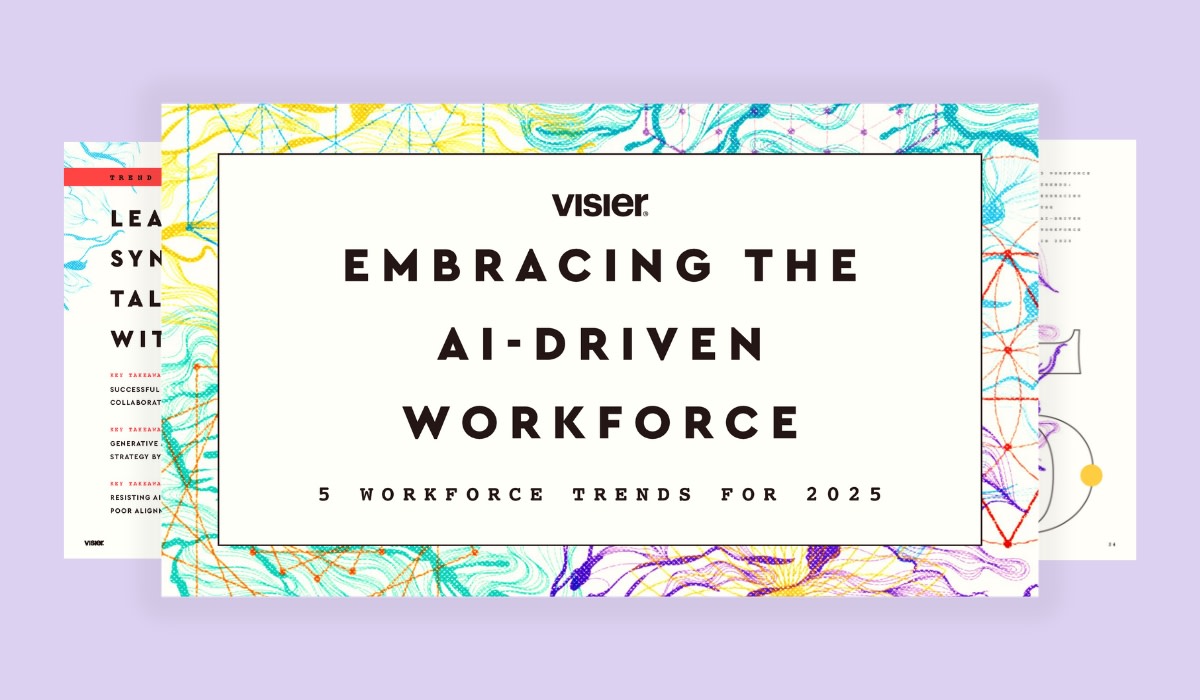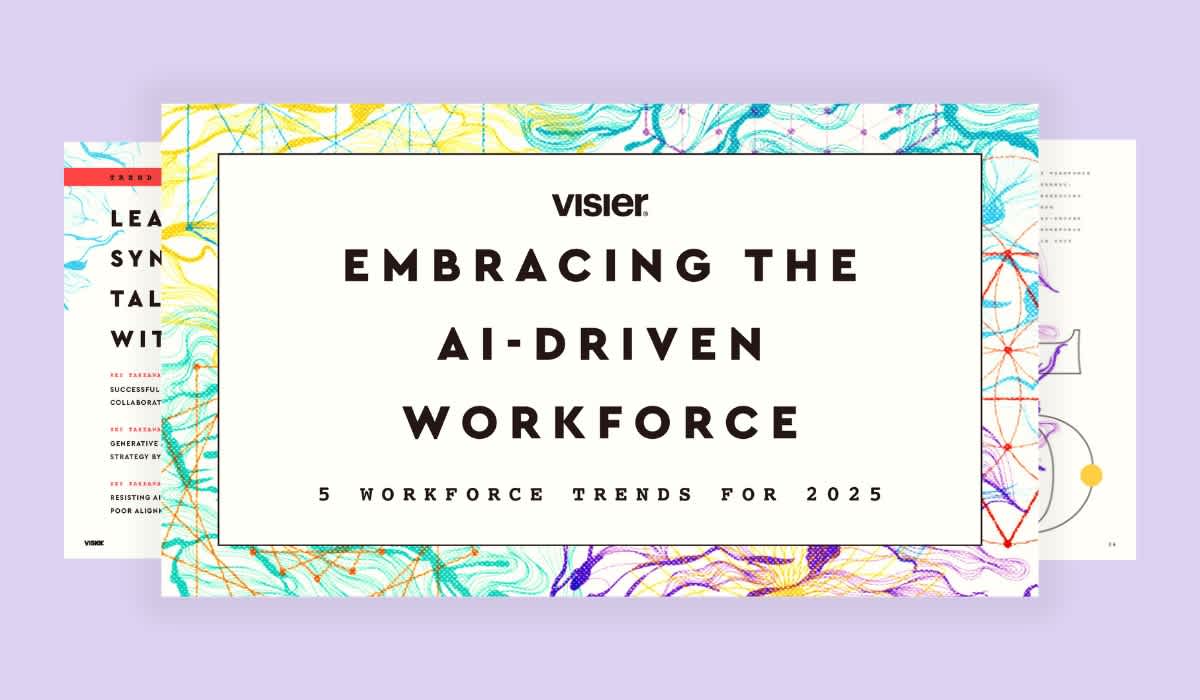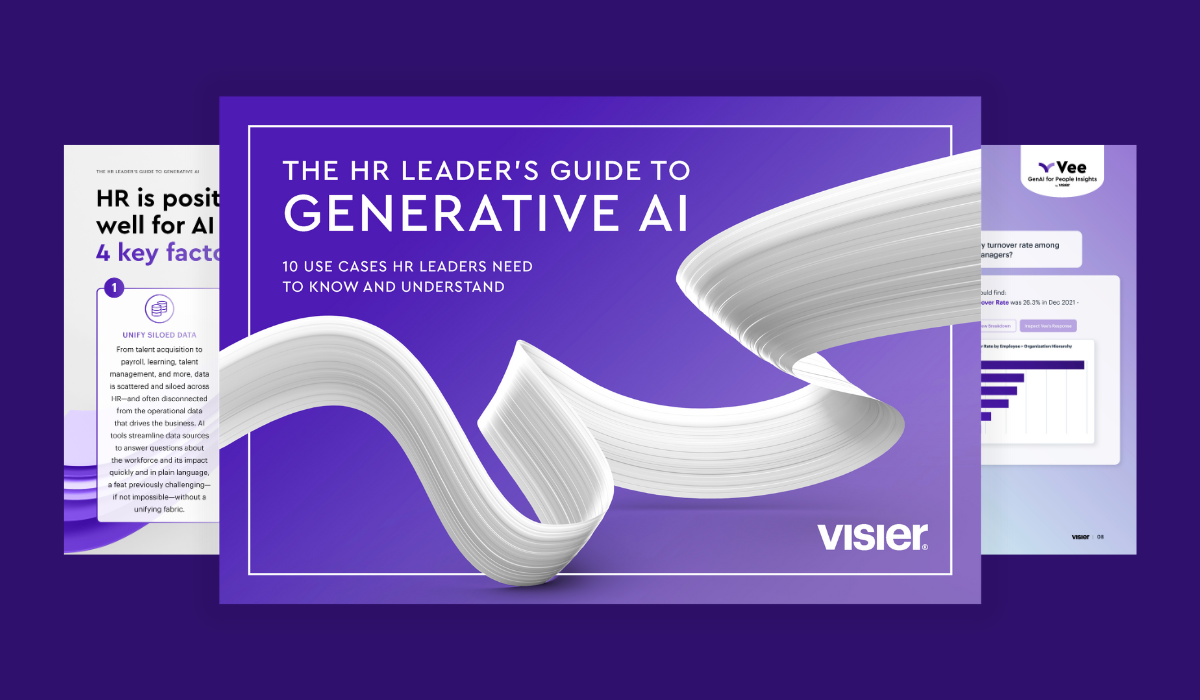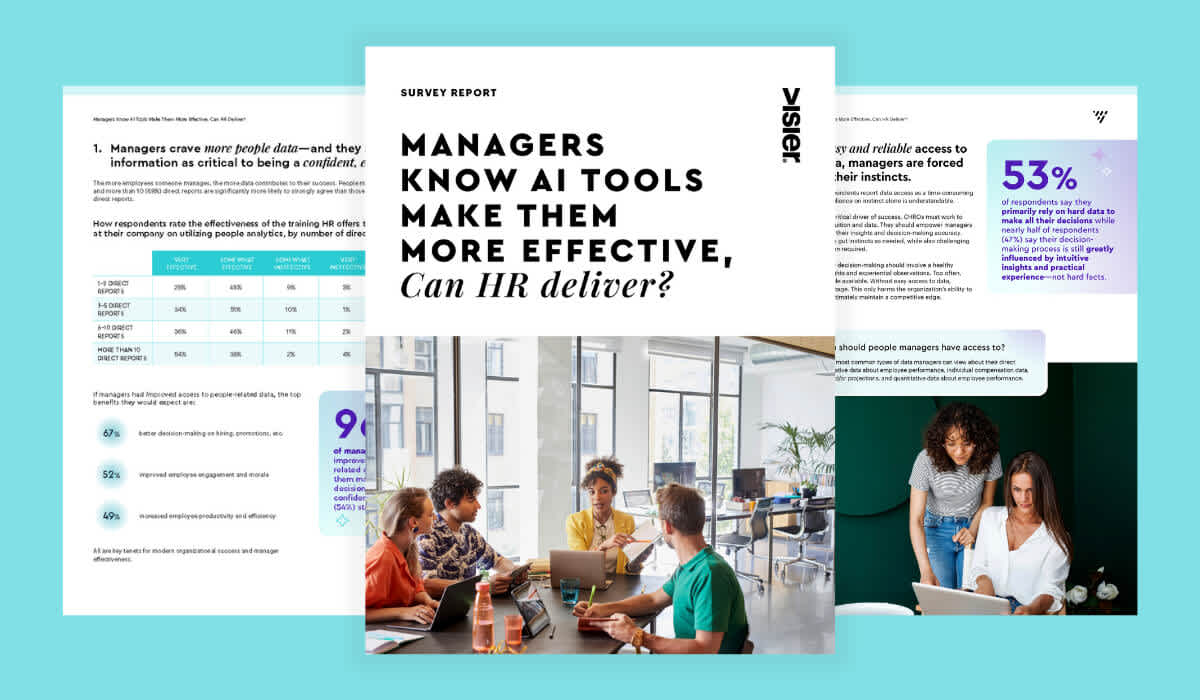Embracing the AI-Driven Workforce: 5 Trends Shaping the Workforce in 2025
Visier's 2025 Workforce Trends Report is out now! Read to explore how AI is transforming talent management, the C-suite, employee performance, and more. Download the full report now.

Visier's annual Workforce Trends Report is out now and ready to download! As we approach 2025, AI has emerged as a transformative force reshaping organizations across all sectors. Understanding this shift is imperative for business leaders to lead organizations through a landscape where AI integration is not just an advantage but a necessity.
![[VIDEO] 2025 Trends Teaser](https://images.ctfassets.net/lbgy40h4xfb7/22K1cw0vzgmmJjl1VZUmnY/576680d6755db0c6affaf88aaf125087/workforce-trends-report-teaser.jpg?w=1200&h=700&fl=progressive&q=50&fm=jpg)
Embracing the AI-driven workforce
True transformation today goes beyond digitization; it requires a comprehensive rethinking of HR’s operating model to fully leverage AI-enabled work. This shift enhances employee productivity, elevates employee performance, and strengthens return on investment, positioning HR as a driving force in the AI revolution.
AI is reshaping companies from the C-suite down to individual employees, supported by data-enabled infrastructure. Companies that integrate AI are poised to lead in this new era, while those that resist risk being left behind (Trend 1: The AI Advantage—Leading in a Forever-Changed World of Work). Cohesive leadership in the C-suite is vital to bridging talent management and technological advancement (Trend 3: Leadership Synergy—Aligning Talent Strategy With Tech Innovation).
Investing in scalable, secure infrastructure is key for organizations to sustain long-term AI adoption (Trend 2: Building the Backbone—Laying Down the Infrastructure for AI Transformation). Such foundations enable organizations to adapt their workforce to meet evolving demands (Trend 4: Workforce Agility—Orchestrating a Human and Digital Workforce), equipping them to orchestrate a seamless integration of human and digital talent. At the core of this strategy, AI should enhance—not replace—the human experience, prioritizing employee performance and engagement (Trend 5: The Human Element—Elevating Employee Performance in an AI World).
Here’s a sneak peek at a few of the top HR trends shaping the AI-driven workplace in 2025.

The HR trend: The AI advantage
To thrive in the AI era, organizations must recognize that the true power of AI-enabled analytics lies in the ability to scale access to critical insights, facilitating faster and more informed decision-making. By integrating work and people data, AI empowers companies to unlock actionable intelligence, enabling them to be more agile and responsive in today’s competitive landscape. Companies that embrace this shift are equipped to adapt quickly, seize emerging opportunities, and navigate disruptions with confidence. Those that hesitate risk falling behind, as data-driven insights become essential to achieving and maintaining a strategic edge.
Leaders who capitalize on AI-enabled analytics foster a data-driven culture that continually refines itself. This dynamic approach allows organizations not only to predict changes but also to proactively address workforce needs, skill gaps, and performance optimization. By leveraging AI, businesses position themselves to lead in a world where adaptability and rapid insight are paramount.
There is so much opportunity for AI to impact the way we work in HR—removing the drudgery of work and infusing intelligent automation so that all employees can thrive.
Dawn Klinghoffer, VP of HR Business Insights at Microsoft
The HR trend: The human element
As AI increasingly reshapes the workplace, maintaining a focus on the human element—the organization's people—is critical. By combining AI insights with a people-centric approach, organizations can drive employee engagement and increase productivity while fostering an environment where innovation flourishes.
AI-enabled analytics provide managers and leaders with access to real-time insights so they can make tailored decisions that enhance team effectiveness and employee satisfaction. This people-first approach transforms workplace culture, creating an atmosphere where employees feel valued, supported, and empowered to reach their full potential, even as they adapt to new technologies.
"My philosophy is that AI isn't about replacing people but empowering them to do more valuable work. It's about increasing productivity, improving quality, and saving time. AI supports better decision-making, automates tasks, and frees up time for meaningful human interaction. That human connection fuels engagement and impact, which is what truly drives success."
Nathan Shapiro, Head of Platform Strategy & User Experience, Paychex
Prepare for what’s next in 2025
As we move into 2025, embracing an AI-driven workforce is no longer optional—it is essential to thriving in an ever-evolving business environment. Leaders who adopt an integrated approach to AI can drive lasting transformation by building a flexible infrastructure, aligning talent and technology strategies, and prioritizing employee development alongside AI advancement. Companies prioritizing these foundational elements are well-equipped to weather change, foster resilience, and maintain a competitive edge in the AI era.
By investing in robust data integration, promoting collaboration across the C-suite, and supporting employees through upskilling and agile workflows, organizations can create an environment where both human and AI-driven capabilities flourish.
Download the full report to explore the strategies and insights needed to lead in a future defined by AI-driven work.

More about the AI-driven workforce
HR use cases are growing daily for generative AI from recruiting to performance talks—here are some prompts to get you started.
Vee Boards are AI-augmented insight boards tailored to specific issues of the highest priority to the C-suite. Read more.
In an AI-driven world, winning companies will use AI productively. Companies that pretend it doesn’t exist will lose. Read how.
Visier's genAI assistant, Vee, answers strategic workforce planning questions in seconds. Here are 10 real examples of answers from Vee.


